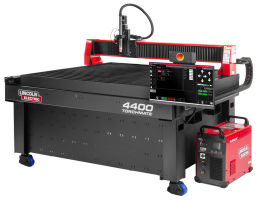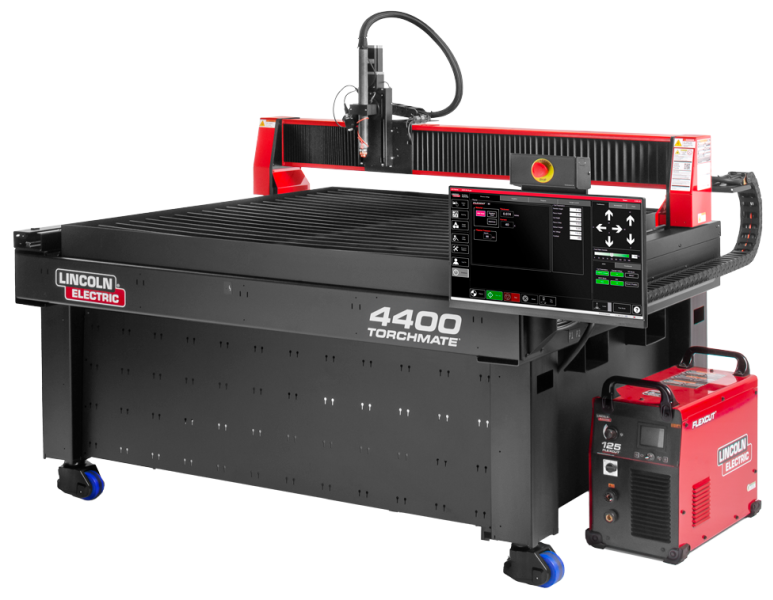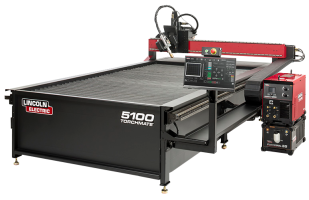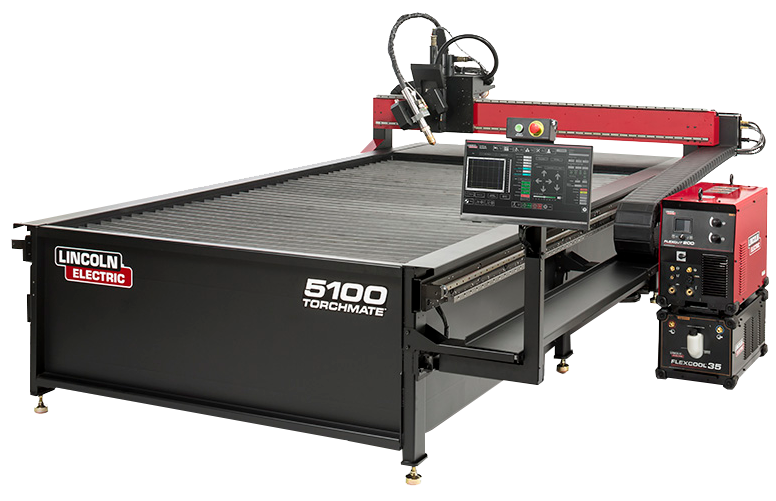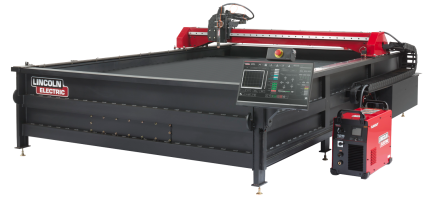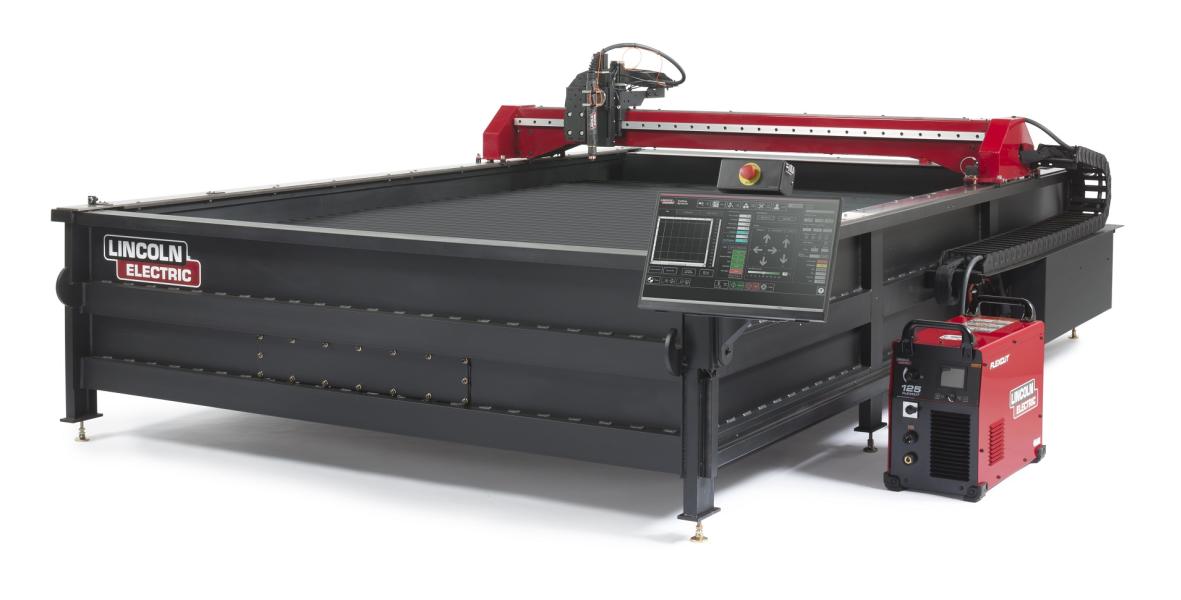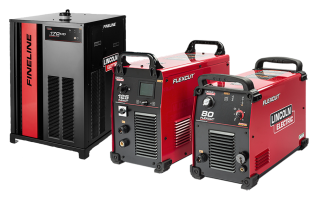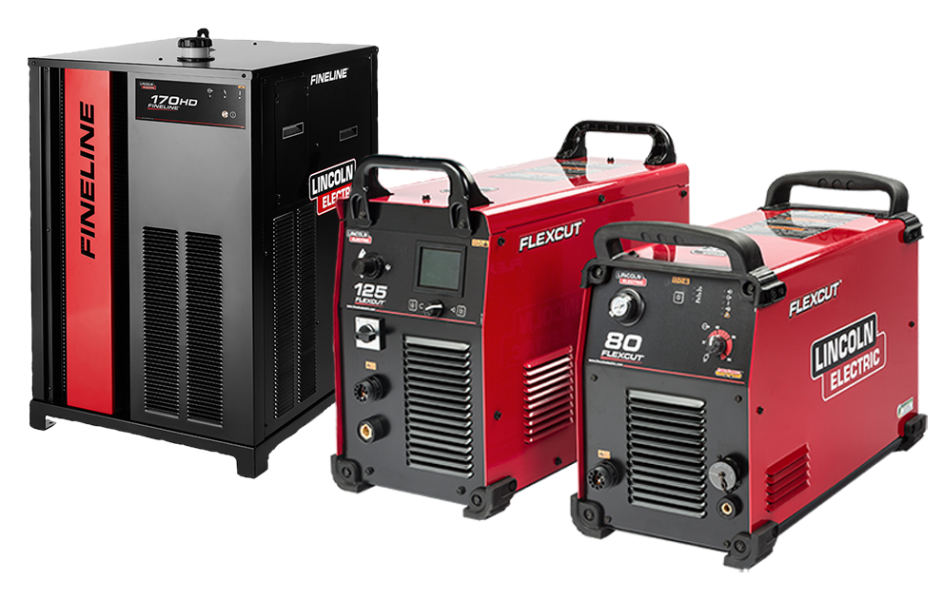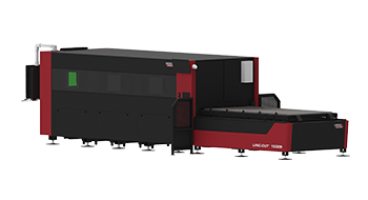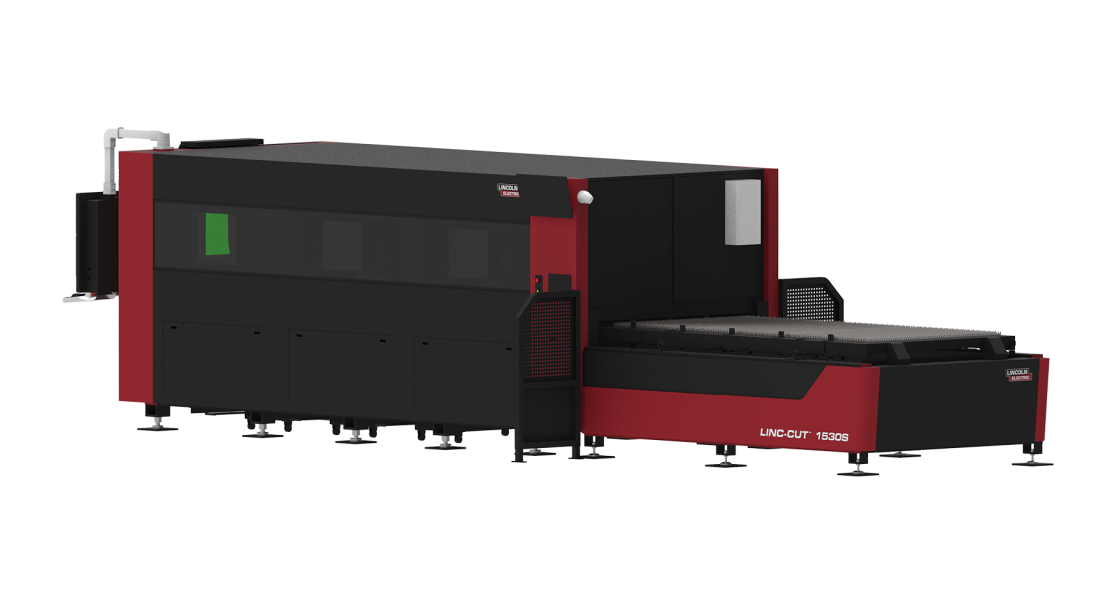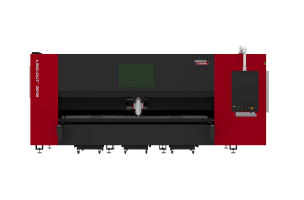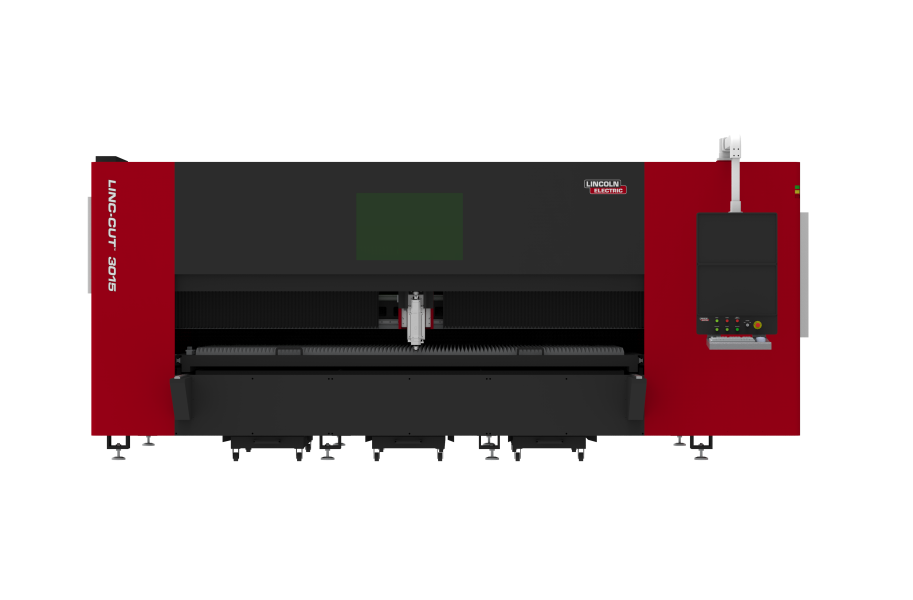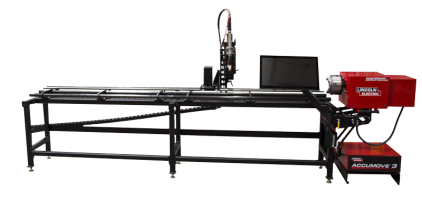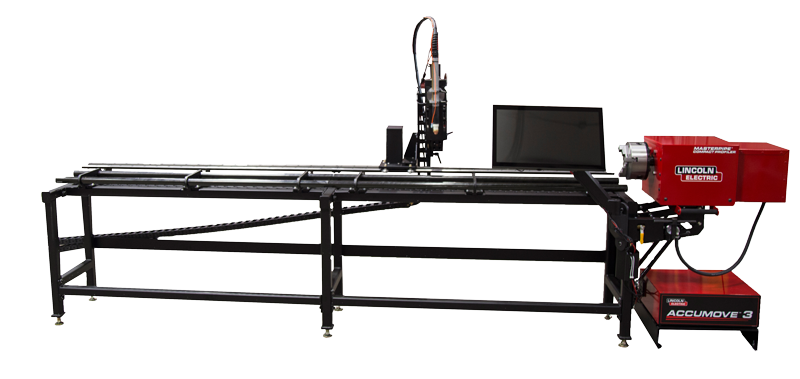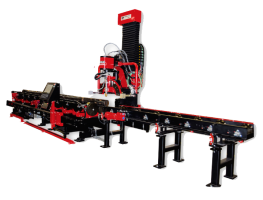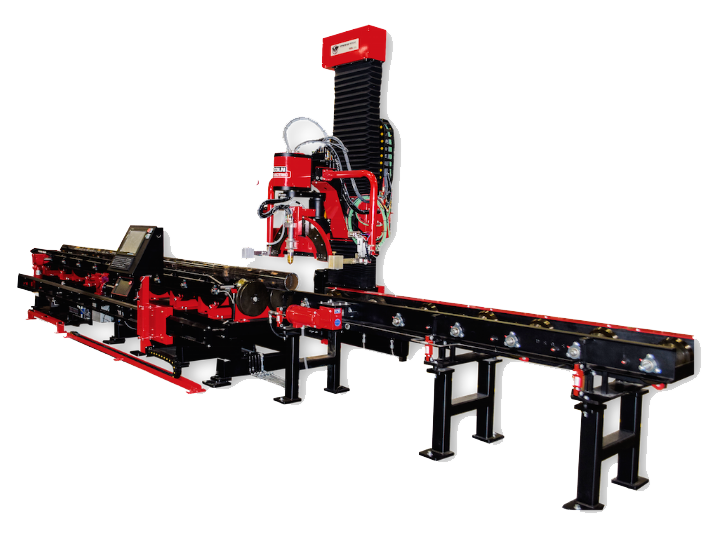Scan Tools
The first step in using a scanned image is to ensure that it is the proper format. To do this open the image in any picture editing program such as Paint. With the image opened save the file as a monochrome bitmap. This is the file type that Torchmate CAD/CAM will recognize for scan tools.
With the file as a monochrome bitmap go to Torchmate CAD/CAM, File > Import and select the file.
Accuscan
With the image brought in scan tools can now be used. For most applications using Accuscan will be the best option. What accuscan does is look at an image and it will interpret any black shapes as parts that will be kept as metal and any white parts of the drawing as scrap. Using a Center Line scan will have the software look the drawing and try to interpret lines, if there was a thin square or box the software may interpret this as a single line not the shape that was wanted.
From the scan tools menu select accuscan. Once accuscan is selected the tool bar on the top will change to the scan tools features. The main features used are two buttons called Trace Setup and Vectorization. Trace setup specifies various tolerances that the computer takes into account when interpreting the image. Vectorization takes the trace setup numbers and runs a scan on the image creating a line drawing as the computer sees it with the current settings. By varying the settings in the trace setup and running multiple scans each one can be compared side by side to find the best line drawing for a particular image.

The trace setup for accuscan has a few key settings. The main two are the line fit tolerance and corners. These two features adjust how accurately the computer is trying to follow the image. The additional options effect issues relating to the scanning of an image from a flatbed scanner. If there is significant dust on the image the speckle filter can attempt to clean it up, the snap lines feature adjusts lines if the drawing was crooked in the scanner, and small shape accuracy can compensate for low resolution scans.
Once the trace setup is done clicking on the vectorization button creates the line trace. Press close on the top tool bar. There are now two objects on top of one another. Moving one off to the side the two can be compared.

Repeating vectorization multiple times with different trace setups allows the comparison of settings in order to determine the best one for a particular image. Each image brought in may have different trace setups based on the quality of drawing and scan.
Zooming in reveals small subtleties of the two scans, the left scan is done with 10 and 10 as the line fit tolerances while the right image used 1 and 1.

Once the ideal trace has been done the next step is to clean up any necessary defects. The first part of the process is to ungroup the trace so that each piece can be edited individually this is done by going to Layout > Ungroup.
To edit a particular part double click on the line and Torchmate CAD/CAM will enter a node editing. Generally when an image is traced there will be an excessive amount of nodes, there a few ways to eliminate them. The most straight forward way is to select the unneeded nodes and press delete, this can work well but if there are hundreds of nodes this can be time consuming. Another method to select nodes to delete is while in node editing select all of the nodes (F3, Ctrl-A, Edit > Select All, or clicking with the arrow tool and dragging a selection box around all nodes will select all of the nodes). Once all nodes are selected press the U key; what the U does is take all of the nodes selected and select every other one. With every other node selected press delete, this process cleans up a significant amount of nodes in one sweep. Repeating this step a few times can reduce the number of nodes to a manageable amount.

Once the outside is done the letters need attention too. These can be done in the same way selecting nodes and deleting them.
Once the letter is to a point where the only nodes left define the corners the letter may not look correct, almost ballooned sometimes. To correct this issue the nodes need to be changed. There are three types of nodes, a circle node is a rounded node, a cross is a sharp node, and a triangle is a tangent node. With a node selected, right click and move the mouse over the selection wanted and release.

Once the nodes are squared reposition the nodes by selecting one and moving it. Once all the nodes are in the correct position press the apply button.
After all node editing is done the drawing is ready to be finalized. Select View > Show Fill, the CAD/CAM software is now displaying the object as it sees it. In this case the object is not correct as the letters are not visable. To remedy the problem select all and go to Arrange > Make Path this tells the computer all that is selected is to be seen as one object. Now with show fill on the object appears as it should and is ready for tool paths or further manipulation.

Center Line
Center Line scanning is used when the scanned image is not shaded in but rather a line drawing.

The Tracing Setup for center line scanning is similar to accuscan’s. Tolerance will adjust how tightly the image is followed; corner sensitivity will affect how close corners are cut.
As before multiple scans can be done slightly changing the settings. This method allows for side by side comparison of trace settings to find the ideal one for the particular scan. When a trace is done with center line scanning the resulting image will be grouped together. The first step in editing the image is to go to Layout > Ungroup.
Depending on the quality of the trace the image may be in multiple parts, Torchmate CAD/CAM indicates how many objects selected in the upper left corner of the toolbars.

Some of the objects may just be double lines or scribbles, by moving parts away temporarily objects underneath can be seen. Any fragments or double traces can be deleted until there is just the desired objects left. The traced object is now like any other object in Torchmate CAD/CAM it can be manipulated, added to, scaled, or tool pathed. To join the two objects as one go to Arrange > Make Path.
Just like any object View > Show Fill displays how Torchmate CAD/CAM perceives the drawing.




